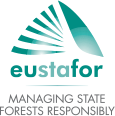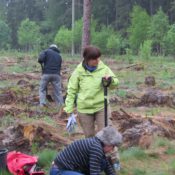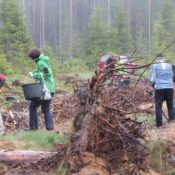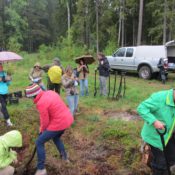How to afforest for the future?
On 30 March 2017, in Brussels, the European Commission (DG AGRI) held a Workshop on “Afforestation and Land Use Change in the EU in a changing climate – How to afforest for the future?”
The importance of forests in facing the challenges of climate change and the acknowledgement of the role of carbon sinks, including forests, in the Paris Agreement, urge towards a better understanding on how best to foster afforestation.
The Paris Agreement reached at COP21 (UNFCCC) stresses the importance of carbon sinks in view of achieving, among others, a balance between emissions by sources and removals by sinks of greenhouse gases by the second half of this century. The EU has committed to reducing its domestic greenhouse gas (GHG) emissions by at least 40% by 2030 compared to 1990, including for the first time Land Use, Land-Use Change and Forestry (LULUCF). The EU LULUCF sector has been contributing to climate mitigation not only by removing carbon dioxide from the atmosphere but also by providing bio-materials that can store carbon and replace fossil raw materials.
While the contribution of the forest sector to climate mitigation and adaptation, bioenergy, bio-based economy, prevention of floods and desertification has been well acknowledged, the level of afforestation in the EU during the last decades has been decreasing. Whereas about one million hectares of agricultural land were afforested in the EU 15 during the period 1994–1999, approximately 700 thousand hectares between 2000 and 2007. The recently closed rural development (RD) programs for the period 2007-2013 contributed an additional 300 thousand hectares of forest in the EU 27 by the end 2015. The new allocation in the RD programs for 2014-2020 for the 28 Member States foresees approximately 510 thousand hectares of new afforestation.
42 workshop’s participants, representing a wide range of backgrounds and institutions from both the MS and the European Commission, concentrated their discussions around the following issues:
- Current and future climate change challenges faced by forests (adaptation and mitigation needs)
- Land use change; Afforestation and deforestation in the EU – Trends /demands / climatic conditions influencing land use changes;
- Multifunctional afforestation (soil and water management, biodiversity, biomass, carbon sequestration, job creation, recreation, etc.) and trade-offs between ecosystem services
- Practical implications; how should species or provenances selection be guided in the coming years?
- Afforestation from the perspective of land owners and project management;
- Obstacles / barriers for the implementation of forestry measures and afforestation (management, control, policy aspects);
- Good and innovative examples and practices from MSs and research projects;
- Policy recommendations, knowledge gaps and new research
The presentations and other relevant documents are available from this page.
Published 25/04/2017
Mr. Piotr Borkowski
Executive Director
- piotr.borkowski@eustafor.eu
- +32 (0) 474 989 319






